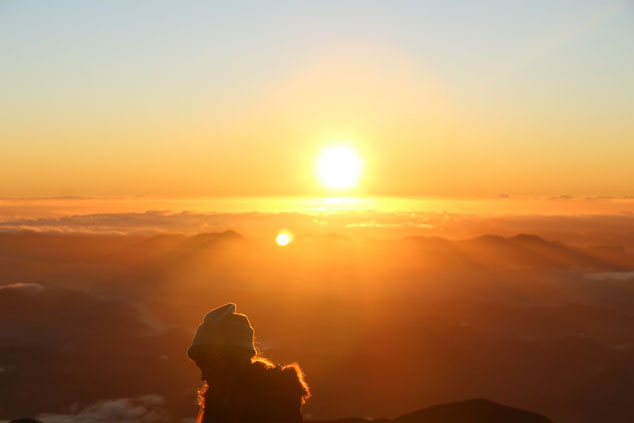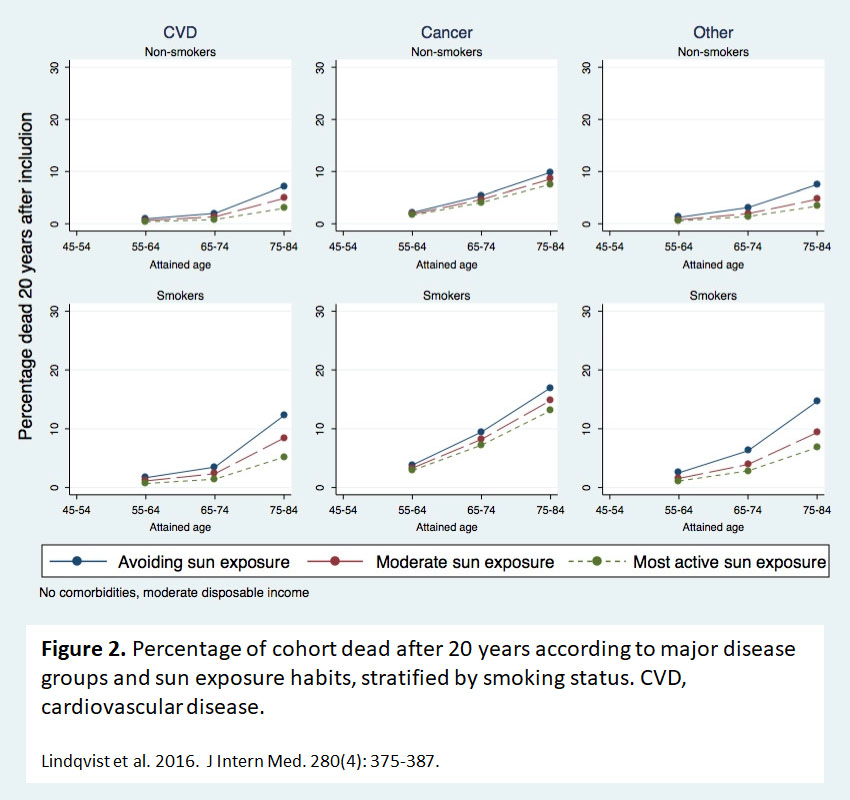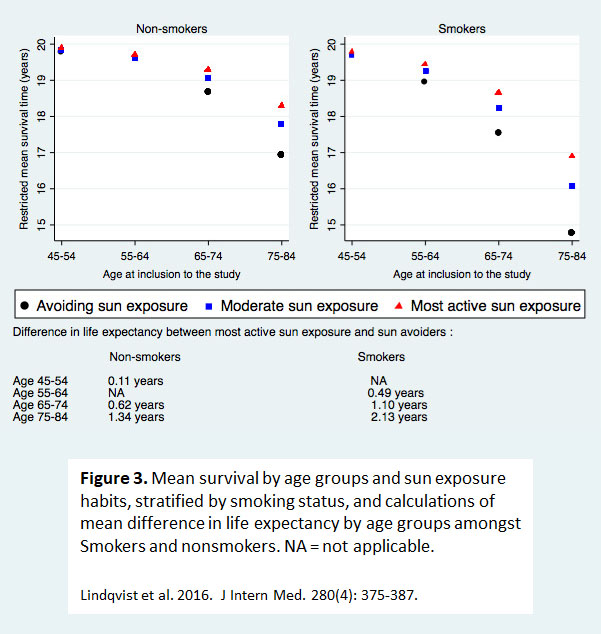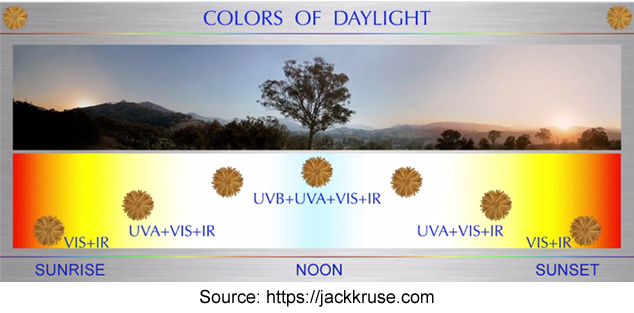 Health benefits of sunlight reveal sunshine to be the most powerful healing agent of all time. Modern medical idiocy says otherwise.
Health benefits of sunlight reveal sunshine to be the most powerful healing agent of all time. Modern medical idiocy says otherwise.
THE FOLLOWING ESSAY WAS EXTRACTED FROM MY FULL REPORT: HOW TO AGE WELL (IN SPITE OF MODERN MEDICINE), WHICH YOU CAN GET DIRECTLY FROM ME AT NO CHARGE HERE.
Benefits of Sunlight: That Old-Time Medicine
Sunlight has been the only original source of energy on Earth over the entire 3.2 billion year evolutionary history of life on our planet.
That’s a pretty significant detail to be ignored, which is what modern medicine has been doing for decades.
SIDENOTE: I use the term “light” loosely here, since Earth receives quite a bit of solar energy outside the range of visible light. Ultraviolet ‘light’ and infrared ‘light’ are components of sunshine, even though we don’t detect them with our eyes.
Over the past half century various medical associations have denounced sun exposure because of its link to increased risks for skin cancer and eye damage.
Most people have fallen victim to that fear. That’s no surprise, since it springs from a massive propaganda campaign against sunshine.
That view is so powerful it has led to a whole host of modern diseases in people who’ve swallowed such misguided dogma. I provided a brief peek into what that means in this earlier post: Heliophobia Makes Modern Disease for One and All.
Fear of the sun is misguided in light of human evolution. Think about this:
We evolved in sunlight. We still depend on it for its life-giving properties. If it were as dangerous as conventional wisdom would have you believe, we wouldn’t be here.
It’s true that UV light can cause skin cancers. However, the incidence of skin cancer, including the most fearsome one (i.e., melanoma), is the wrong measure for evaluating the effects of sunshine.
This is where the heart of the matter is something health researchers call all-cause mortality.
It’s the one overriding measurable for understanding how the health benefits of sunlight underlie a longer, healthier lifespan.
Keeping track of all-cause mortality is the most important outcome for any longevity study. The concept is straightforward.
- If all-cause mortality increases, it means a shorter life.
- If all-cause mortality decreases, it means a longer life.
One of the best studies I’ve found about sunshine vs. all-cause mortality was published in 2016 (see Lindqvist et al. [2016] in the References below).
It was the second article published from a large observational study of nearly 30,000 Swedish women over a 20-year period.
Two figures from the article show the core results.
The first one shows the oldest age group (75-84 years) having the greatest survival rate against cardiovascular disease (CVD), cancer, and all ‘other’ causes as correlated with sun exposure.

While Figure 2 shows a potential advantage to smokers, a slightly different perspective, shown in the next graph, reverses the advantage back to non-smokers.

The simplest way to state the main point of the article, as depicted in those two graphs, is this: Even though sun exposure may lead to skin cancer, the lack of sun exposure will kill you sooner than cancer will.
Sunshine: Still a Hard Sell
Regardless of these kinds of studies, the ‘Oh-My-God-Sunshine-Will-Kill-You’ crowd hasn’t paid much attention to them.
Nor to the sensibilities of human evolution.
The made-up controversy about the dangers of sunshine is like many other issues regarding natural approaches to health. Meaning, contradictory views abound. It’s your challenge to sort them out and decide for yourself whether to take action on one side of the controversy or the other.
The additional information I provide below should therefore be helpful in your decision-making process.
Sunlight is More Than One Thing
Full-spectrum sunlight provides several ‘colors’ throughout the day, sunrise to sunset, as shown in the following graph.

Light at sunrise is exclusively visible (VIS) and infrared (IR), each of which persists all day long. As the morning progresses, ultraviolet-A (near UV: UVA) increases. The middle of the day sees ultraviolet-B (far UV: UVB) come and go. Finally, UVA drops out in late afternoon, leaving us once again with visible and infrared light.
The exact composition and intensity of each part of the spectrum vary with seasons and latitudes. Overall intensity of all parts of the spectrum peaks in summer at the equator. It drops off at higher latitudes and bottoms out in mid-winter, including the near disappearance of UV light.
As you might expect, health benefits from sunlight are commensurate with its variability in quality (“color”) and intensity.
What Does Sunshine Do for You?
Being outdoors a lot, in the sun, characterizes all of the “Blue Zone” cultures popularized in Dan Buettner’s book, The Blue Zones: 9 Lessons for Living Longer From the People Who’ve Lived the Longest.
Ultimately this means sunshine is a valuable component of a long healthspan (i.e., a comparative reduction in all-cause mortality as you age).
You can expect many benefits along the way to living such a sunny lifestyle. A handful of them stand out, as follows:
a. Sets Your Master Molecular Clock in the Morning.
Your day-night cycle (aka, circadian rhythms) run your entire health show. All the benefits of circadian living start with getting sunlight in your eyes within the first 1-2 hours after sunrise.
Whether rain or shine, you’ll ‘see’ the combination of the sun’s blue and infrared parts of the spectrum first thing in the morning. That’s what provides the ‘get your day started’ signal for the master clock and all its subsidiary clocks in the rest of your body.
This means the absolute BEST way to start every day is to get outside and look toward the sunrise (not directly at the sun, of course – more like about 15 degrees away from it). It only takes a couple of minutes.
b. Ditto for Skin Clocks
One of the most surprising discoveries about how we regulate circadian rhythms occurred in 2017. It was the discovery that the well-known ‘retinal hormone’ in your eyes – melanopsin – also occurs in human skin.
Melanopsin is one of the key receptors for sensing blue light through the eyes.
Finding it in our skin sent shockwaves through the community of circadian researchers.
It means skin ‘sees’ the same light eyes can see. It also means skin clocks respond similarly to eye clocks.
Your skin is, therefore, able to ‘see’ light.
On hindsight, this should be no surprise. Way back in the 1970s scientists discovered that full-spectrum light on the skin could reverse what was then known as cabin fever.
Nowadays it’s called Seasonal Affected Disorder (SAD). It’s characterized by the onset of depression in fall and winter due to lack of sunlight. It’s become so significant that it has its own entry in the Diagnostic and Statistical Manual of Mental Illness (the key manual for all psychiatric disorders).
The successful use of full-spectrum lighting against SAD highlights the importance of two different colors of the solar spectrum – blue and infrared.
Now we know the benefits of melanopsin’s absorption of blue light only accrue when it’s combined with infrared light. In other words, the complete solar spectrum you get first thing after sunrise and all throughout the rest of the day.
And, in case that’s not possible for you in mid-winter where you live, you can find a number of full-spectrum lamps and light bulbs on Amazon to help you set your skin clocks in the absence of sunshine. (Actually, I prefer a reptile lamp, which also emits beneficial UVA light. I don’t use it often, since we get plenty of winter sunshine here in central Arizona.)
The bottom line is this: setting your body clocks means getting the right light in your eyes and on your skin.
The more skin you can expose to the sunrise, the better.
A CRITICAL POINT: It’s the combination of blue and infrared light that drives proper circadian signaling. You absolutely must be exposed to both simultaneously to see any benefits to your health.
The failure to combine blue with infrared will make you sick in more ways than you can shake a stick at. In which case nothing you can do to increase your healthspan will work.
Nothing!
(Gee – I sure hope that got your attention.)
c. Vitamin D Synthesis
Foremost in the public’s mind is the role of sunshine in vitamin D synthesis in the skin.
Vitamin D is much more than a vitamin. It’s better thought of as a steroid hormone. After all, it shares a key precursor (cholesterol) with dozens of other steroids. And it carries hormone-style chemical signals throughout your body.
Its role as a hormone explains how it’s so valuable in providing protection from osteoporosis, breast cancer, prostate cancer, diabetes, gum disease, prostate cancer, multiple sclerosis, asthma, psoriasis, cystic fibrosis, colon cancer, celiac disease, osteoarthritis, Crohn’s disease, scleroderma, rickets, osteomalcia, cardiovascular disease, and many other infirmities.
CONNECTING THE DOTS: In the Swedish study cited earlier, two of the factors driving all-cause mortality were cardiovascular disease and cancer. Sunshine reduced their occurrences. So does vitamin D. The function of sunshine in preventing these diseases therefore rests, in part, on its role in vitamin D synthesis. (e.g., See Breast Cancer Awareness Failure.)
Vitamin D is often referred to as the ‘sunshine vitamin’ because the only way we can produce it is by exposing skin to UVB light.
Dietary or supplemental vitamin D can also be helpful. However, the form of vitamin D produced in your skin is unique. And it works way better than any form you can consume.
One more thing. The value of vitamin D for your healthspan has become so well recognized that testing for it is now a standard component of your annual Medicare physical.
And yet one more. Keep this in mind when you look back on your most recent Medicare (or other) basic lab tests: Since natural levels of vitamin D depend on sunshine, you can expect to see your lowest levels in mid-winter and your highest levels in late summer.
d. Energy Metabolism
Dysfunctional energy metabolism is the root of all disease.
Understanding how you’re supposed get and use cellular energy may seem a bit complicated.
Who am I kidding? It’s so complicated that, when I first learned about it in an introductory biology course, it was so far over my head I got a ‘D’ on the exam over it.
So I’ll tread as lightly as I can for you on this topic.
Just keep this in mind:
of health, fitness, and longevity lies.
The good news is, you don’t have to grasp all the details to know how to capitalize on the right lifestyle choices for keeping your metabolism running smoothly.
Of course, as I mentioned earlier, sunlight is the only original source of energy we have on Earth.
Fundamentally, this means optimal health rests on efficiently harvesting that energy.
The process starts with something called the ‘photoelectric effect’, which is:
The production of electrons or other free carriers when light is shone onto a material. Electrons emitted in this manner can be called photoelectrons.
[This so-called ‘law of the photoelectric effect’ was the basis for Albert Einstein’s only Nobel Prize, awarded in 1921. The popular notion that he won the prize for his theory of relativity is incorrect.]
In other words, your body absorbs light from the sun and can convert it into energy-rich ‘bioelectrons’. Bioelectrons run most of the bioelectricity you depend on for just about all your body’s function. Without it, your body gets closer to simulating a dead battery.
In simple equation form it looks like this:
A GOOD QUESTION: If you happen to be a real geek about this topic, like I am, you may be wondering what happens with protons. Electron flow (electricity) is complemented by proton flow (protonicity) in your body. You may not be aware of protonicity, since your local power company only supplies you with electricity, not protonicity. Yet your life depends on protonicity every bit as much as electricity. At this time, delving into protonicity would make this essay more complicated than is necessary. You may already think it’s too complicated, so I’ll hold back on talking about protons this time. Whew!
e. Structuring Water
You probably think of water as plain ol’ H2O.
Nothing could be further from the truth.
Water exists in multiple forms, depending on how its molecules split apart or stick together. Water has structure.
One particular type of water structure can only occur with an energy input from the infrared (IR) portion of the solar spectrum.
This is a newly discovered role for IR light for cellular energy.
This role is outlined in a recently published book by Dr. Gerald Pollack (University of Washington), titled, The Fourth Phase of Water: Beyond Solid, Liquid, and Vapor.
IR, which is part of full-spectrum sunlight all day long, is THE energy source we need for generating and maintaining the structure of water in cells. Properly structured cellular water is the bedrock of our bioelectrical systems.
What all this means is a healthy life is simply not possible without infrared light.
Dr. Pollack’s discovery is worthy of a Nobel Prize, in my opinion. In fact, his work shows how certain related research in the past, which did result in Nobel Prizes, is dead wrong. It should therefore come as no surprise that modern medical advice based on poor science, including Nobel Prize-winning research, is a failure.
Reading Dr. Pollack’s book will give you a detailed understanding of the importance of structured cellular water – maybe too detailed for most folks.
Aside from that, a good question is, what can you do about it?
The good news is, IR light from sunshine makes up about 42% of the solar spectrum all day long, throughout all seasons.
So the obvious answer is to get out in the sun more often.
The most effective strategy to do so would be:
NUDE SUNBATHING!
Now THAT should get your attention. I’m not being facetious, either. The more exposure to full-spectrum sunlight to your eyes and to your skin, the greater the benefits.
Can you imagine your doctor recommending nude sunbathing? No? Too bad, since sunbathing is a HUGE missing ingredient for achieving optimal health.
Can you imagine treating the elderly – homebound, in assisted living, incarcerated in hospitals, etc. – with full-body, full-spectrum sunlight? No again? Too bad again. Health benefits would be so impressive that it would probably undermine the entire eldercare industry.
ONE CAVEAT: No sunburns! Sunburns are never good. You therefore have to build up your exposure times without damaging your skin.
AVOIDING THE BURN: Many of the usual suspects determine your ‘burnability’ – skin type and color, latitude, season, time of day, UV index, etc., etc. One other factor, which is nearly always missing from discussions about sunburn, is your solar callus. It’s loosely defined as your resistance to burning. You have control over it, too. It builds up upon regular skin exposure to morning sunshine, due to the combination effects of blue and IR light. When you spend time in the sun in the morning, you’ll notice the amount of time it takes for you to start getting that familiar mid-day pre-burn sting diminishes. Before I found out about this, I’d often notice the pre-burn feeling beginning after 15-30 minutes in the sun. Now that I’ve built up my solar callus, I don’t get the slightest feeling of oncoming burn even after 4-5 hours of sunshine from late morning to early afternoon. (If that sounds like the right amount of time for a round of golf – well, then, you’ve found me out!) And I don’t wear a hat or sunglasses. Nor do I use sunscreen. (They all severely undermine the benefits of sunshine. Sunscreens also generally act as toxic hormone disruptors. Bad news all the way around.) It’s just my solar callus doing its job for me. Now what I get is a little skin reddening due to the effect of sunshine in expanding my skin arterioles (small arterial branches) closer to the surface. It means the sun’s rays can more easily energize my blood better, which provides a myriad of health benefits for my cardiovascular health and my immune system.
In the absence of nude sunbathing, you can still take steps to get more sunlight into your body (i.e., on your skin AND into your eyes).
The simplest things I do regularly include:
- Facing the morning sun as early as I can for at least a couple of minutes (in shorts, no shirt, no shoes, bare feet on bare ground).
- Reading the morning paper outdoors, first thing in the morning.
- Never wearing sunglasses outdoors (they filter out much needed UV light).
- Either not wearing my prescription glasses outdoors or at least making sure they’re low enough on my nose that sunlight gets into my eyes (most glasses filter out UV light).
- Playing and working outside during the day as much as possible (e.g., golf, yardwork, long walks).
- When in my office, turning on my high-intensity ‘reptile’ lamp (lots of UV and IR) that faces me as I sit at my desk (not exactly ‘sunlight’ but better than nothing when indoors).
In other words, I spend time in the sunlight every chance I get – morning, midday, late afternoon. UVA, UVB, and the blue/IR combo are my best medicine.
DID YOU CATCH THAT PART ABOUT BARE FEET ON BARE GROUND?
It turns out that getting electrons from sunlight synergizes with getting electrons directly from the Earth itself.
The surface of the Earth is negatively charged – i.e., full of electrons.
Surface electrons come from lightning strikes hitting the ground about 100 times per second, or as much as 8 million times per day worldwide.
Your body absorbs those surface electrons through your skin.
Since electrons are reducing agents (aka, ‘antioxidants’), this is the greatest source of free antioxidants you can get anywhere.
Taking in electron energy from the Earth is a major theme for optimal health. After all, those Paleo ancestors I keep referring to didn’t wear Nikes. (They may have worn animal skins on their feet, which is fine. Leather is conductive.)
Now go get some sun!
Comments or Questions?
I’d love to hear from you. This and every other post here provides a comment section at the end of the post, exactly for that purpose.
So, by all means, leave me your thoughts.
I would be especially grateful if you point out any flaws in my logic, factual errors, or ordinary typos. (I’ll give you a little ‘huzzah’ in my heart.)
Then I’ll respond as soon as I can.
References
Ginde AA, Liu MC, Camargo CA Jr. Demographic differences and trends of vitamin D insufficiency in the US population, 1988-2004. Arch Intern Med. 2009 Mar 23;169(6):626-32. doi: 10.1001/archinternmed.2008.604. PMID: 19307527; PMCID: PMC3447083. https://www.ncbi.nlm.nih.gov/pmc/articles/PMC3447083/
González-Gross M, Valtueña J, Breidenassel C, Moreno LA, Ferrari M, Kersting M, De Henauw S, Gottrand F, Azzini E, Widhalm K, Kafatos A, Manios Y, Stehle P; HELENA Study Group. Vitamin D status among adolescents in Europe: the Healthy Lifestyle in Europe by Nutrition in Adolescence study. Br J Nutr. 2012 Mar;107(5):755-64. doi: 10.1017/S0007114511003527. Epub 2011 Aug 17. PMID: 21846429. https://pubmed.ncbi.nlm.nih.gov/21846429/
Holick MF. Sunlight and vitamin D for bone health and prevention of autoimmune diseases, cancers, and cardiovascular disease. Am J Clin Nutr. 2004 Dec;80(6 Suppl):1678S-88S. doi: 10.1093/ajcn/80.6.1678S. PMID: 15585788. https://pubmed.ncbi.nlm.nih.gov/15585788/
Holick MF. Vitamin D: a d-lightful solution for health. J Investig Med. 2011 Aug;59(6):872-80. doi: 10.2310/JIM.0b013e318214ea2d. PMID: 21415774; PMCID: PMC3738435. https://www.ncbi.nlm.nih.gov/pmc/articles/PMC3738435/
Holick MF. Sunlight, ultraviolet radiation, vitamin D and skin cancer: how much sunlight do we need? Adv Exp Med Biol. 2014;810:1-16. PMID: 25207357. https://pubmed.ncbi.nlm.nih.gov/25207357/
Lindqvist PG, Epstein E, Landin-Olsson M, Ingvar C, Nielsen K, Stenbeck M, Olsson H. Avoidance of sun exposure is a risk factor for all-cause mortality: results from the Melanoma in Southern Sweden cohort. J Intern Med. 2014 Jul;276(1):77-86. doi: 10.1111/joim.12251. Epub 2014 Apr 23. PMID: 24697969. https://onlinelibrary.wiley.com/doi/10.1111/joim.12251
Ma LZ, Ma YH, Ou YN, Chen SD, Yang L, Dong Q, Cheng W, Tan L, Yu JT. Time spent in outdoor light is associated with the risk of dementia: a prospective cohort study of 362094 participants. BMC Med. 2022 Apr 25;20(1):132. doi: 10.1186/s12916-022-02331-2. PMID: 35462547; PMCID: PMC9036798. https://www.ncbi.nlm.nih.gov/pmc/articles/PMC9036798/
Reusch J, Ackermann H, Badenhoop K. Cyclic changes of vitamin D and PTH are primarily regulated by solar radiation: 5-year analysis of a German (50 degrees N) population. Horm Metab Res. 2009 May;41(5):402-7. doi: 10.1055/s-0028-1128131. Epub 2009 Feb 24. PMID: 19241329. https://pubmed.ncbi.nlm.nih.gov/19241329/
Rostand SG, McClure LA, Kent ST, Judd SE, Gutiérrez OM. Associations of blood pressure, sunlight, and vitamin D in community-dwelling adults. J Hypertens. 2016 Sep;34(9):1704-10. doi: 10.1097/HJH.0000000000001018. PMID: 27379541; PMCID: PMC5341698. https://www.ncbi.nlm.nih.gov/pmc/articles/PMC5341698/
Yang W, Ge M, Wang Y, Pang X, Wang C. Spatial distribution differences of 25-hydroxyvitamin D in healthy elderly people under the influence of geographical environmental factors. Sci Rep. 2022 Jul 27;12(1):12781. doi: 10.1038/s41598-022-17198-9. PMID: 35896722; PMCID: PMC9326152. https://www.ncbi.nlm.nih.gov/pmc/articles/PMC9326152/
All the best in natural health,
![]()
Statements on this page have not been evaluated by the Food and Drug Administration. Information here is not is not intended to diagnose, treat, cure, or prevent any disease.
I may receive a commission for purchases made through those links.
This doesn’t change the cost to you.
[…] Health Benefits of Sunlight vs. Medical Dogma […]